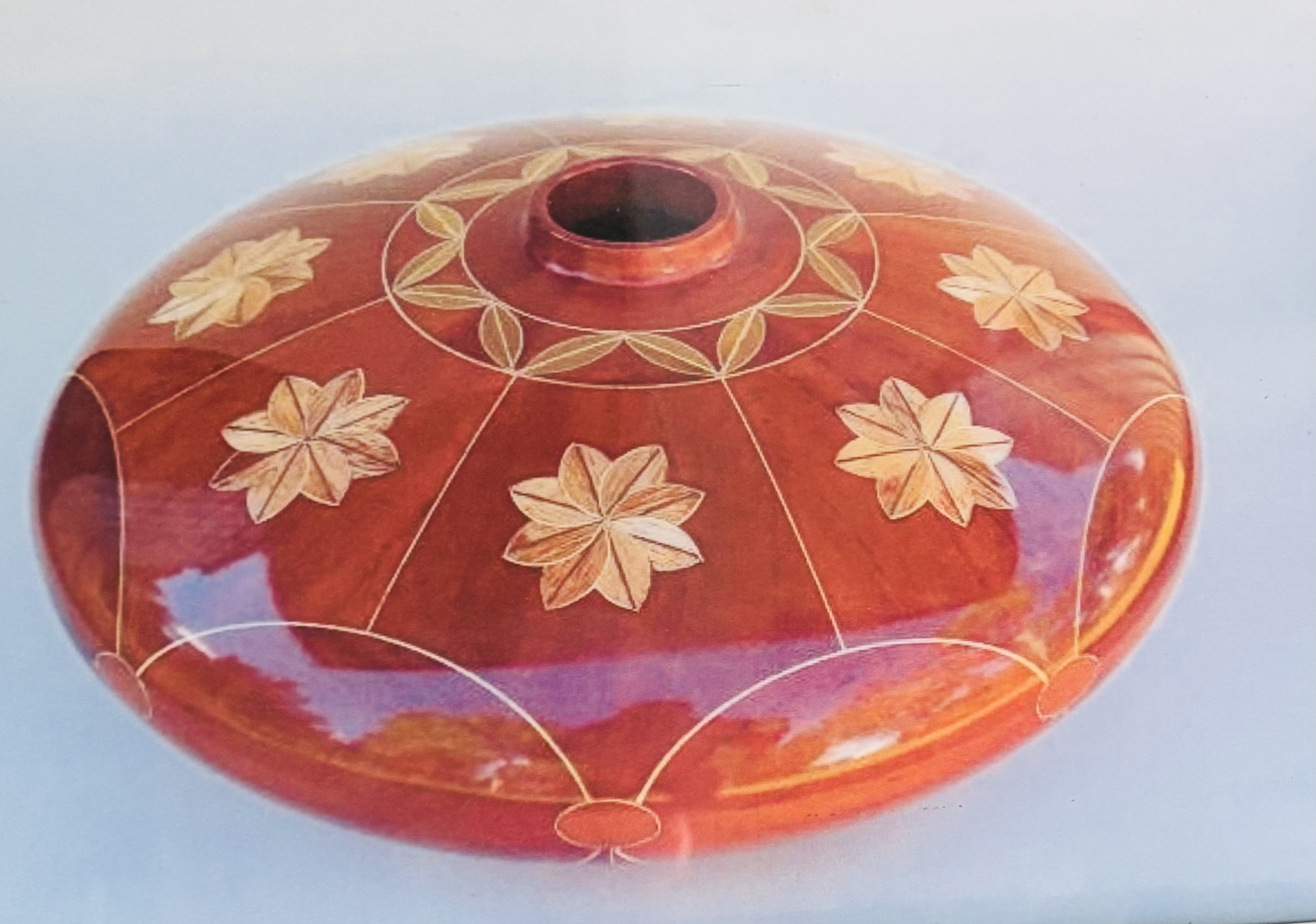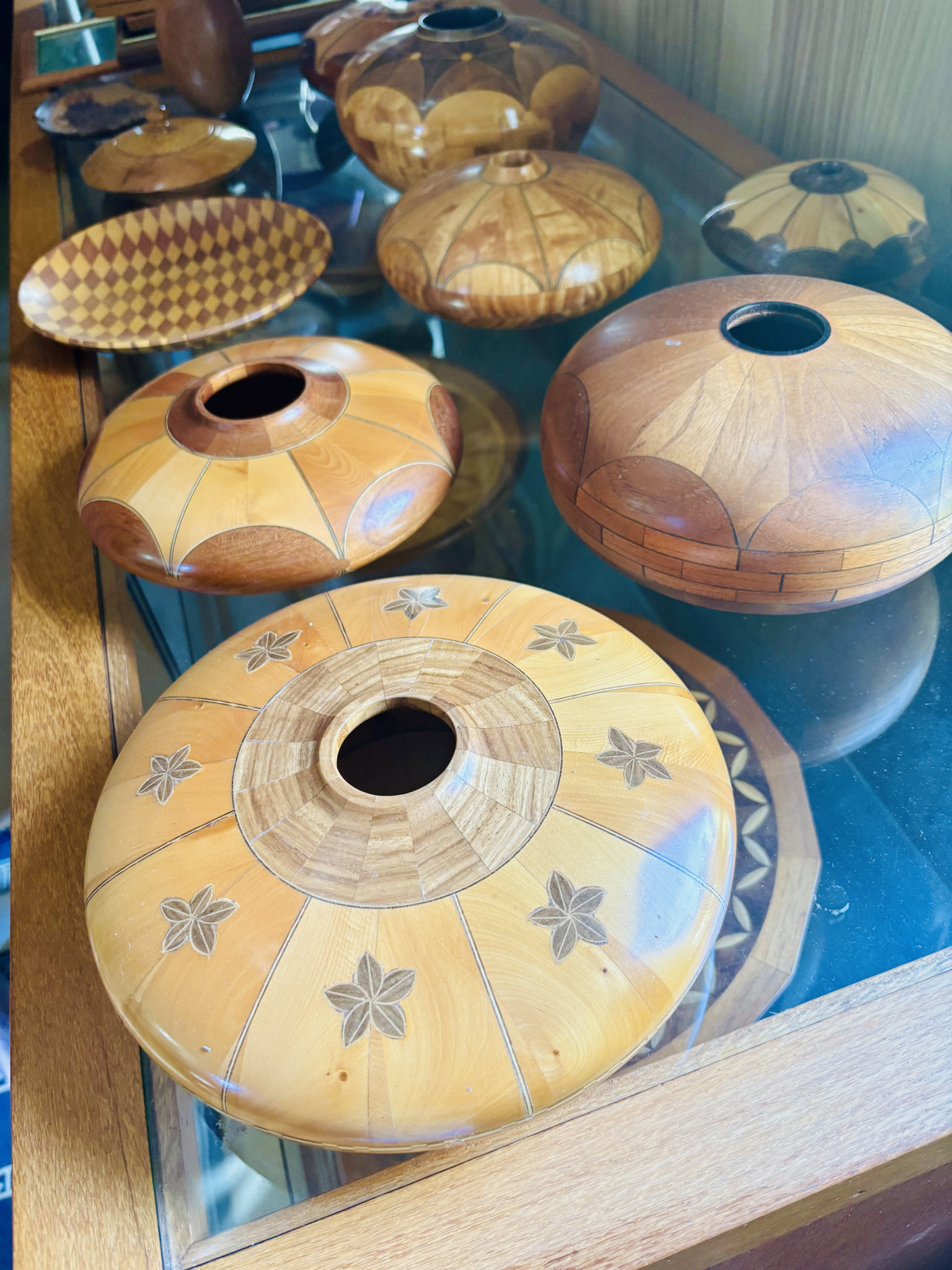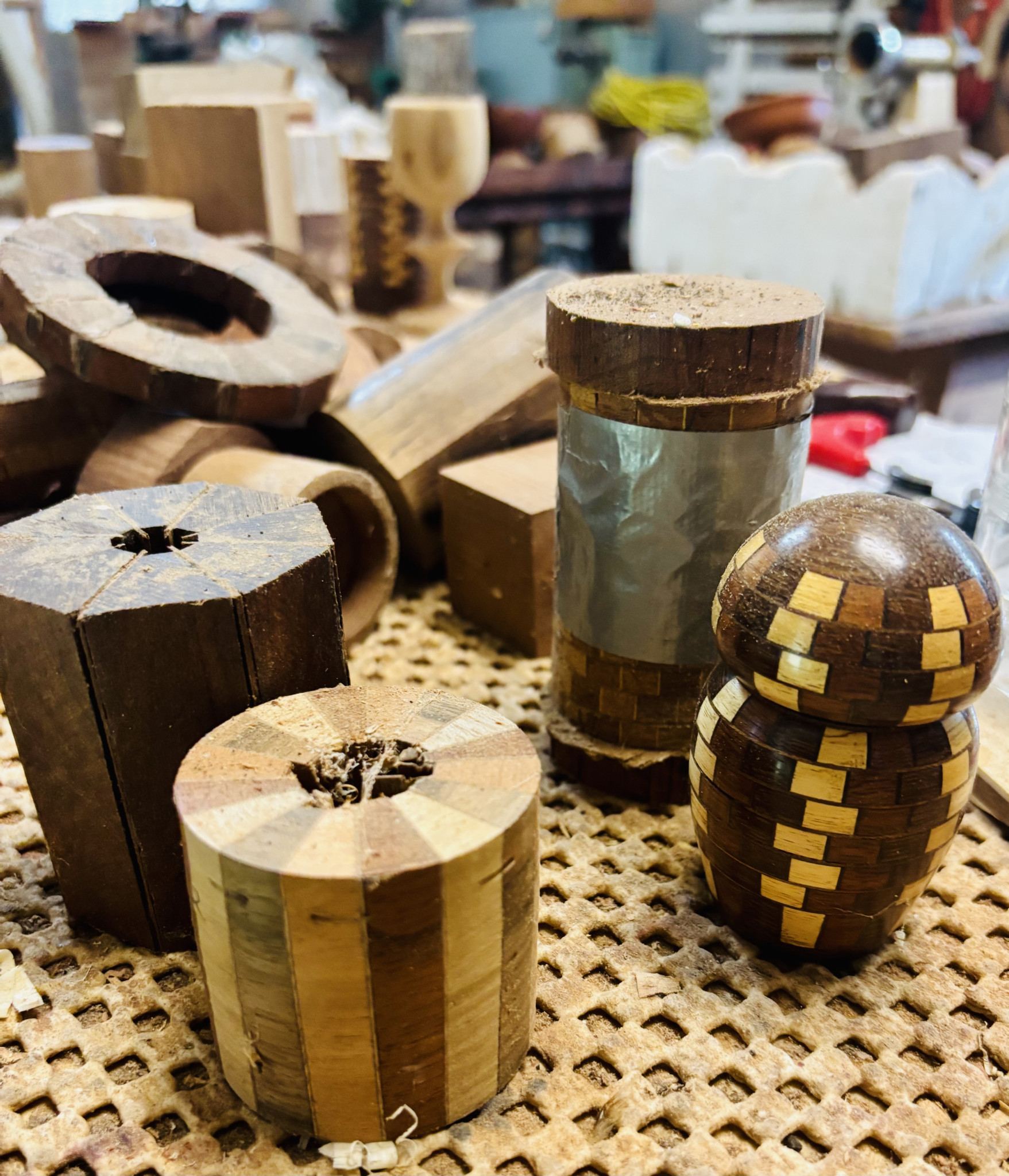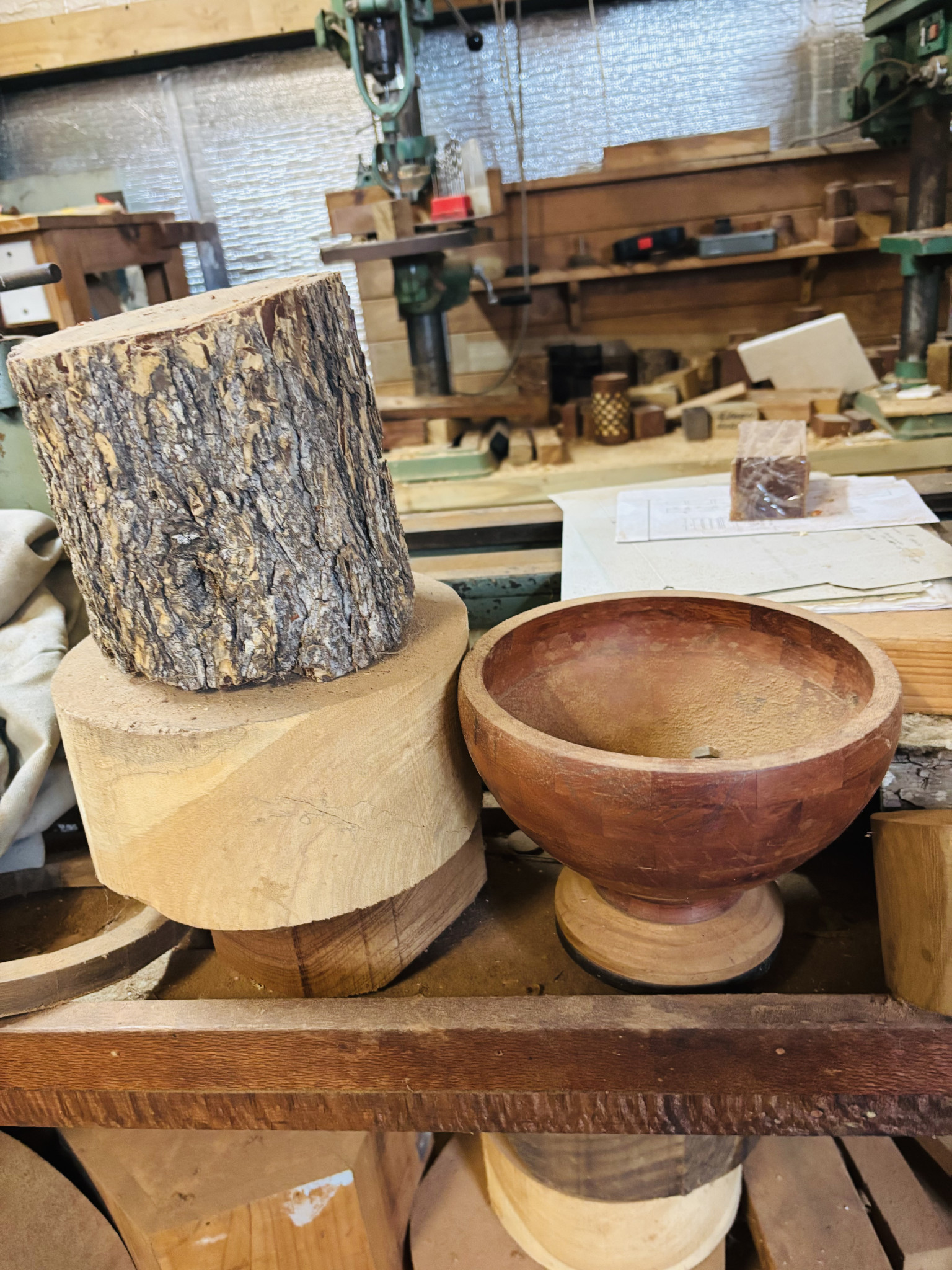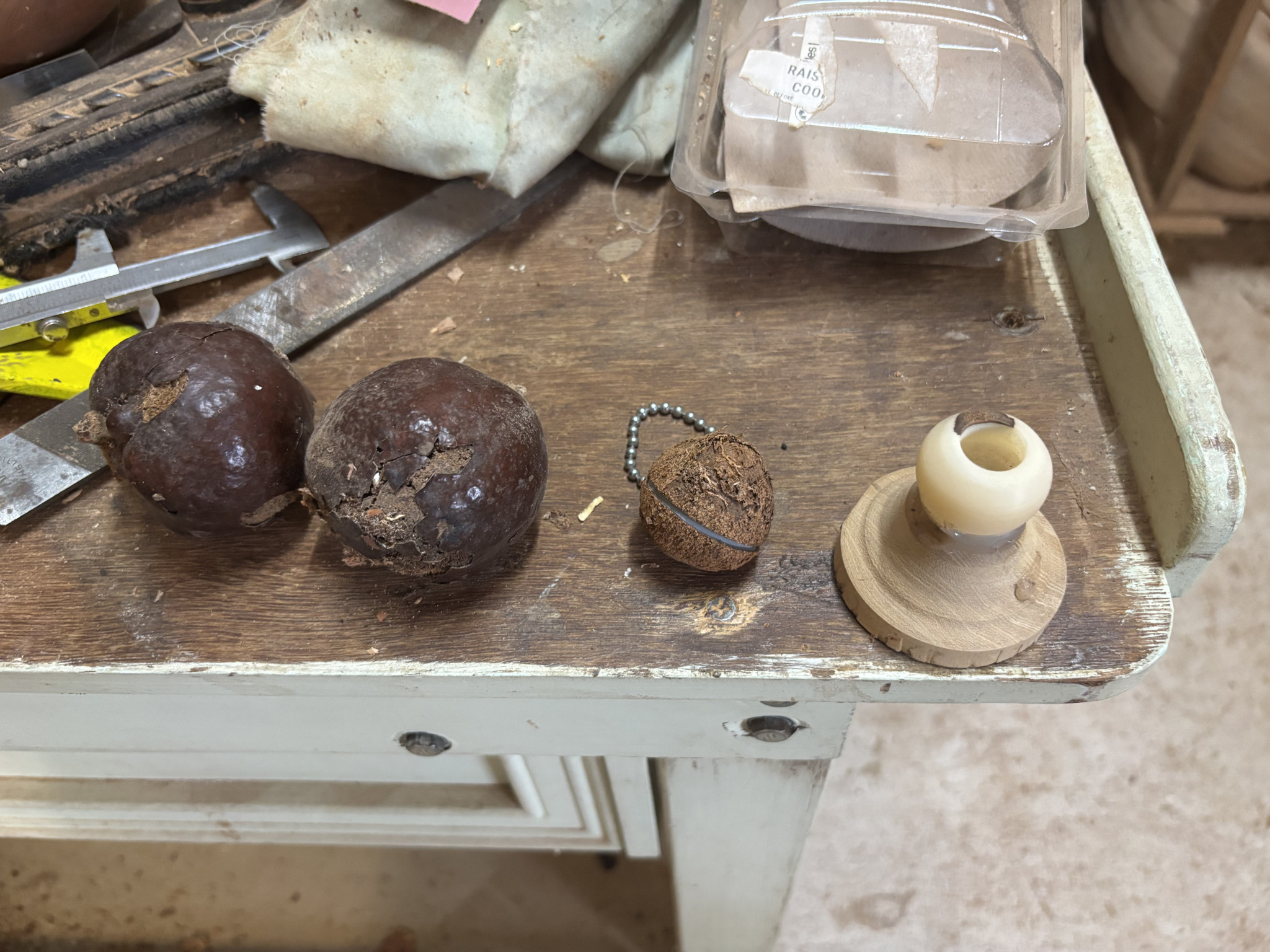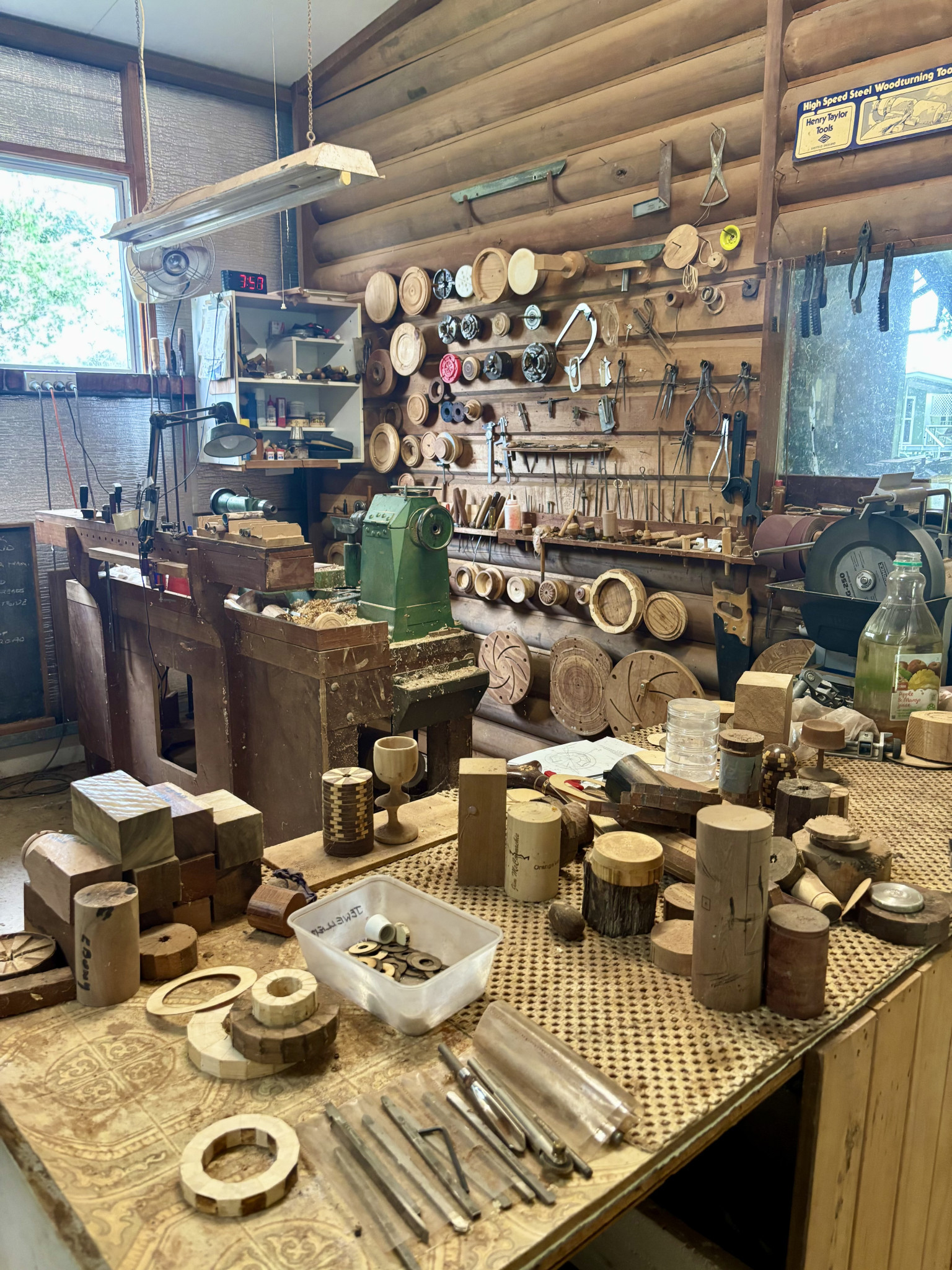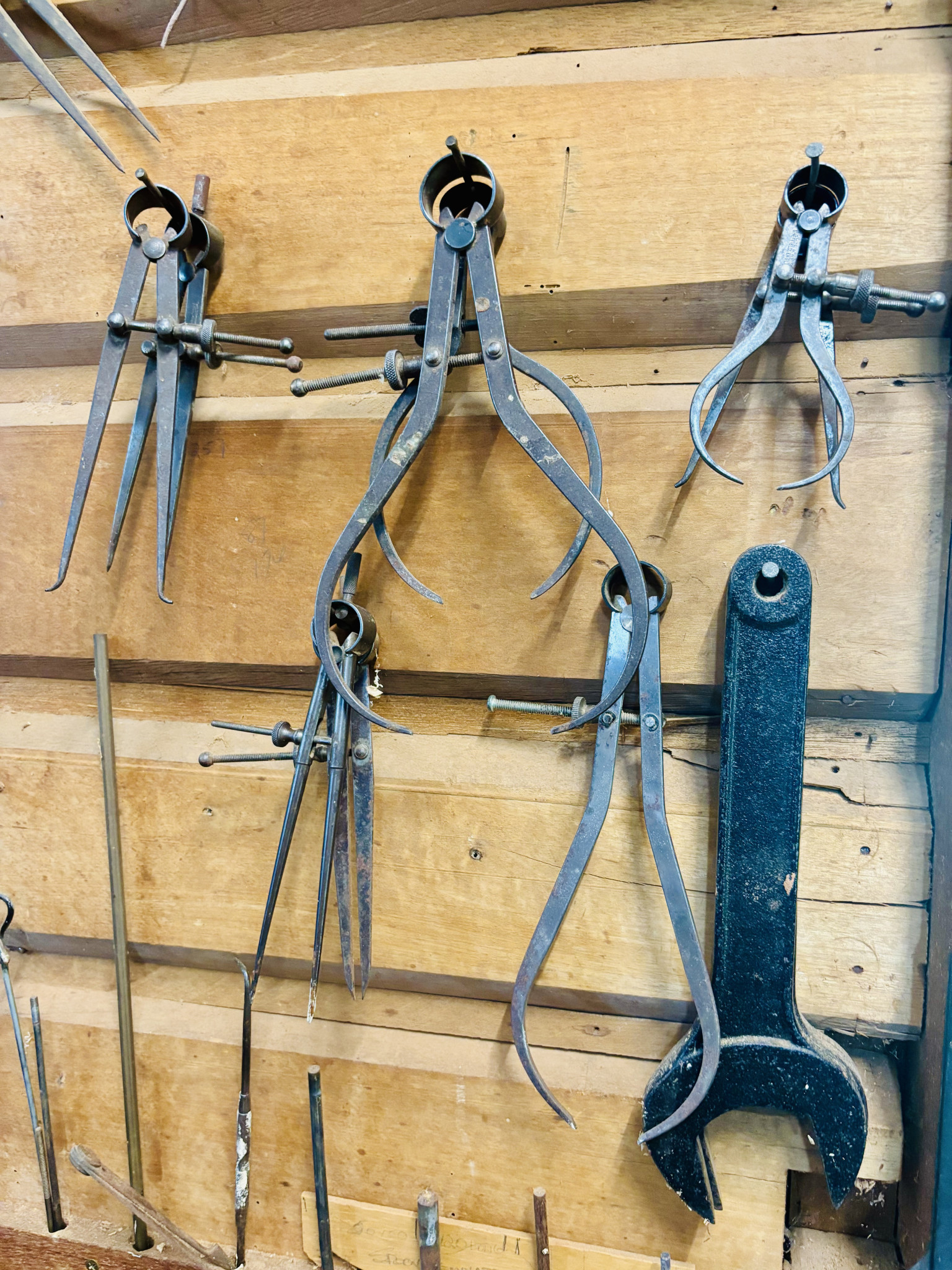Community & Business
20 June, 2025
Woodwork wonderland right on our doorstep
WHEN a retired teacher makes “wooden bowls” for a hobby and becomes an internationally renowned craftsmen, there is a kind of underdog magic to the story.
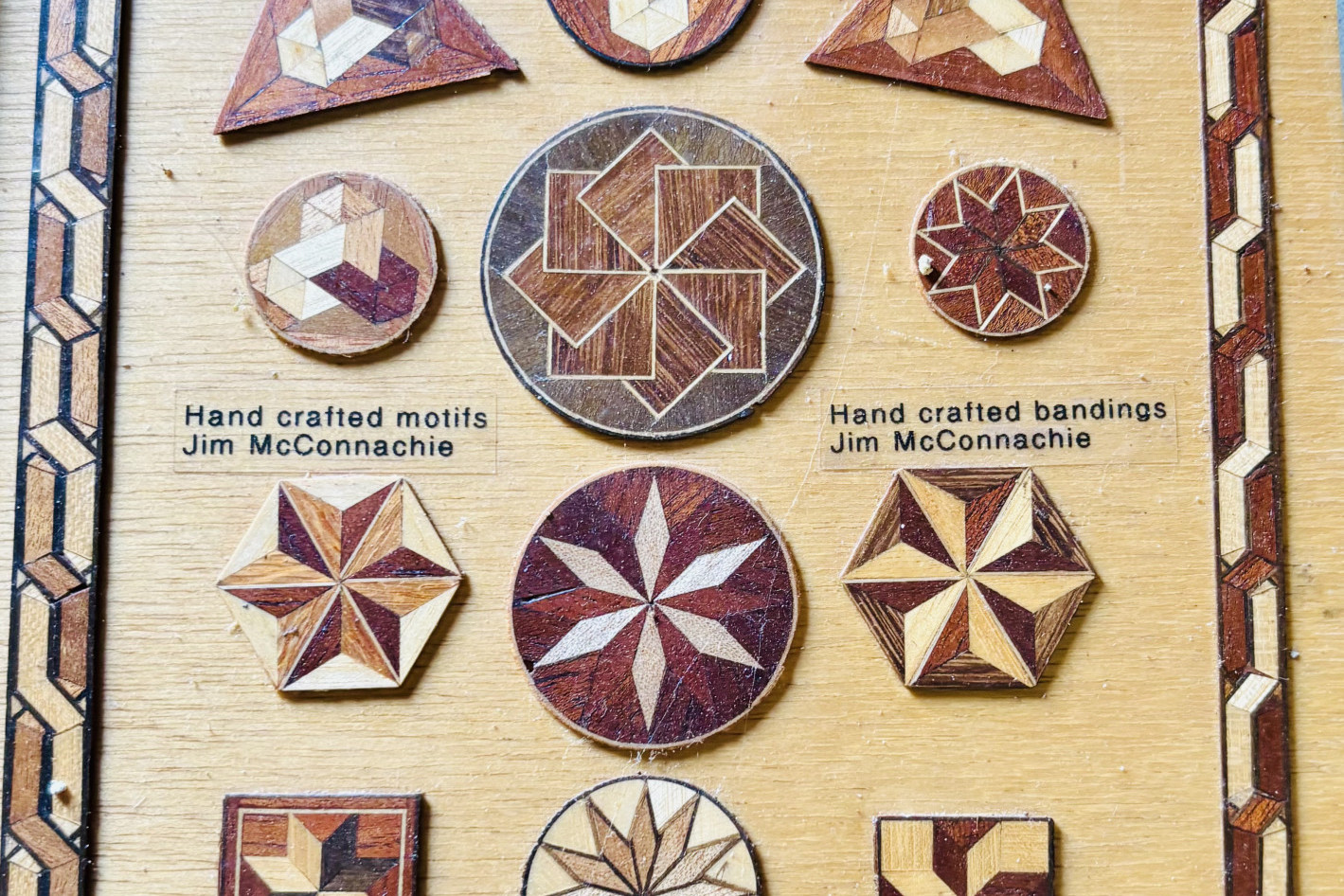
Jim McConnachie is 83, a local woodturner, who is enjoying his twilight years with his wife Sharon on their property just outside Mareeba where they have lived for 40 years.
“We were only going to stay here for five years,” Jim laughs, looking out fondly over a great expanse of land dotted with a variety of interesting trees.
“We planted all of those,” he says.
Timber, and what it can become, is his passion.
A former carpenter, Jim taught at TAFE in Cairns, then in Mareeba, before retiring early in 1995 and making his living through furniture restoration, cabinetry, and the odd building and construction work.
He also began taking his hobby of woodturning a little more seriously and honed his segmenting skills. (Segmenting is a technique where pieces of wood are glued together to create a whole and then used for turning and shaping on a lathe.)
That “little more seriously” went to another level after Jim and Sharon went to a three-day woodturning event in Proserpine, a place where woodturners chewed the fat, worked on projects, had a few beers, repeat.
“There was probably about 150 people there. You brought your own gear, did a bit of turning,” he said.
“The organisers got a high-profile woodturner to come and wander around and help people.
“He spotted some of my work and said, ‘we want you to come and display at Melbourne’s National exhibition’.
“And I thought, ‘come on I don’t have a studio, I work out of a tin shed, I’m a retired carpenter, a self-taught woodturner, I can’t compete against these fellas that appear in all these international magazines’.
“Anyway, I sent two bowls down, and they equalled best in the show.”
He smiles. It was a particularly sweet result.
He had previously taken those bowls to a Ravenshoe event and tried to sell them for $300.
“They laughed at me and said, ‘who do you think you are?’” Jim continued.
“They wouldn’t even judge them.”
Those same bowls sold in Melbourne for $1000 and $1200, respectively, and Jim was invited to return to the show the following year.
“The second year I won it outright – best exhibit in the whole show. Third year, I won best exhibit again, and the fourth year, I won best exhibit again, and the fifth year they said, ‘bugger this, we’ll get you to judge’.”
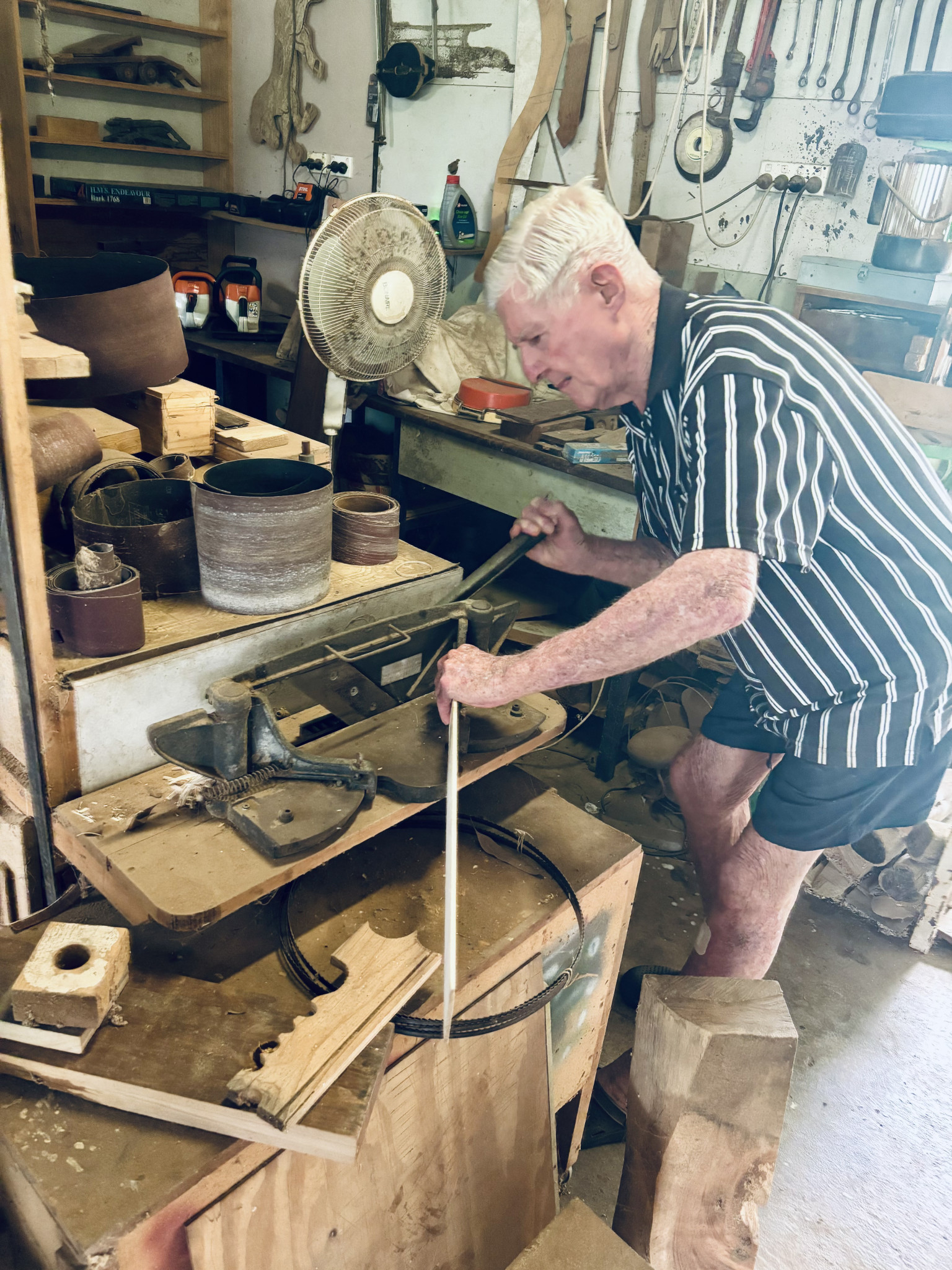
For anyone unsure of what all the fuss was about over “wooden bowls”, a look at his works, tucked around the L-shaped living room, leaves you speechless. It is a woodturning wonderland.
Magnificent bowls, vases, decorative boxes, and other objet d’art are displayed in cabinets (made by Jim), on shelves and tables.
On the walls hang framed professional photographs of his stunning national winning entries.
“That bowl – I grew the timber,” he says proudly as he points to a chequer-style platter.
Another bowl has an inlay with a 3D effect. Yet another is distinctly Aztec in style.
Over on a large table are classic wooden toys, spiralling artworks, and pieces of whimsy.
He brings over a dark wooden acorn, small in his palm and perfect in shape.
He gently twists an undetectable screw-line and two halves reveal the contents – half a dozen tiny wooden wine goblets, all reducing in size like a Russian doll, to the smallest which can be no bigger than a grain of rice.
Jim says his ideas and creativity are borne out of “just doodling” or “scrounging around the internet” for inspiration.
“I don’t copy,” he adds.
“When I do my turning and make a bowl out of a bit of wood, I don’t record it, I don’t keep records, I don’t duplicate. Everything I make is a one-off.”
Despite his fame – and yes, he has had many articles on his work in “international magazines” – Jim maintains a simple rural lifestyle, pursuing his woodturning and selling his artwork and beautiful walking sticks at the Tablelands Art Society or at various events on the east coast.
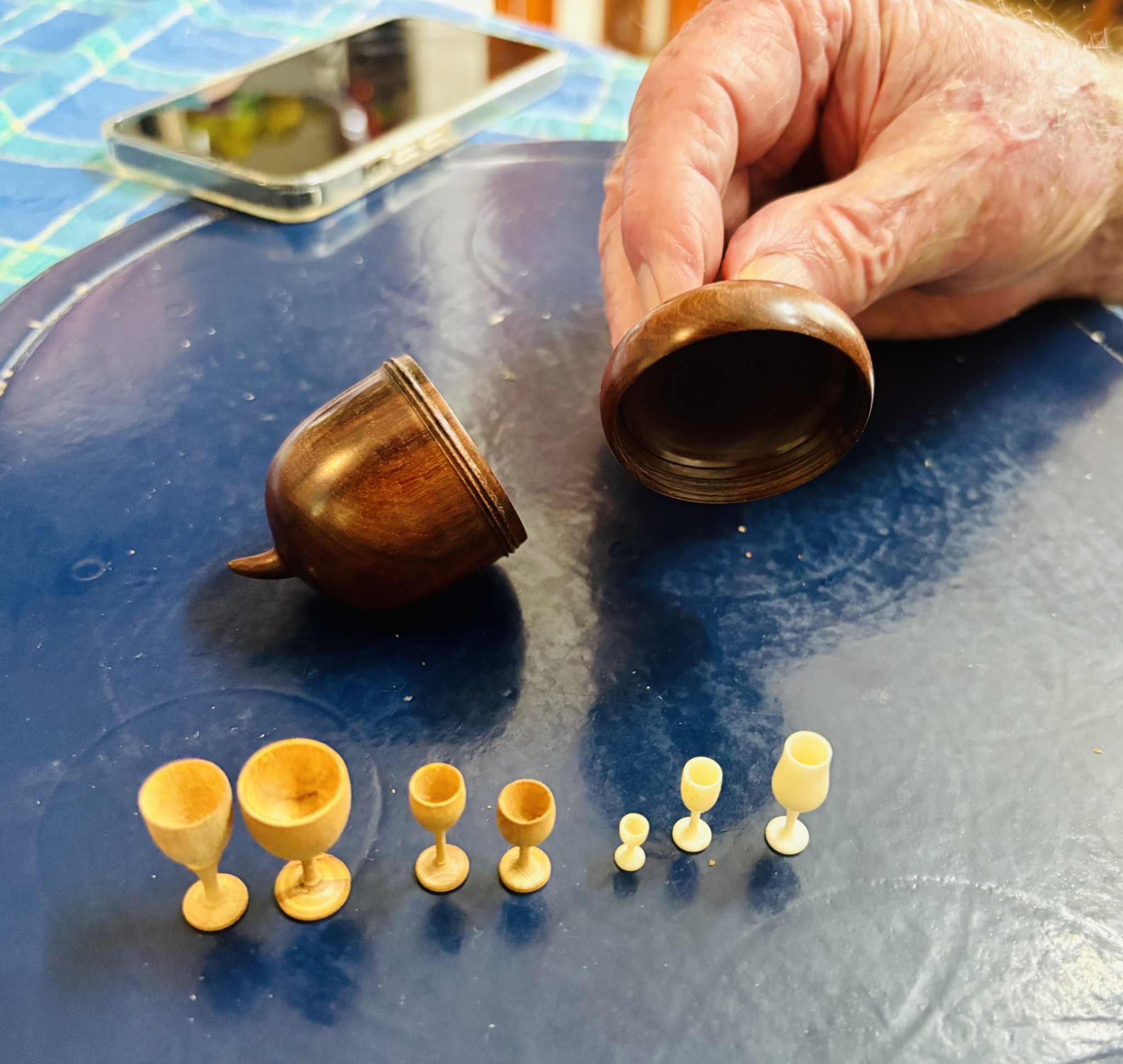
Jim also helps care for Sharon, who was diagnosed a few years back with Parkinson’s Disease.
They recently secured some outside assistance after the “nightmare” navigation of bureaucracy.
They laugh at their home full of collections of glass, and “opp shop” treasures, mostly spotted by Sharon over the years.
Art surrounds them in many forms, including paintings by Jim.
Sharon is an award-winning quilter and can still hand-stitch small patches of fabric into intricately-patterned works.
Jim is also generous with his knowledge. In 1984, he and a couple of friends formed a woodworker’s group in Cairns.
It held meetings once a month at either Cairns TAFE or in Mareeba after Jim moved. They charged $1 a person to cover tea and biscuits. Sometimes they would invite guest presenters in to teach new skills.
“One time we had an event at Cairns and we filled the venue – a lot of people would just turn up when something was on,” he says.
“So, we introduced a membership fee of $12 a year and that thinned it out a bit.”
Forty years on, the woodworkers guild, affectionately known as the “Woodies”, has about 15 members.
Jim has been president for about 30 years, with the occasional break, but handed over the reins to a younger member last year.
He and Sharon remain life members, and Jim hosts the meetings at his “Tin Shed”.
“It evolved to the point where I was doing most of the demonstrations, so we have it here, as I have all the machinery,” he says.
“But no one can touch my machines – I don’t like cleaning blood off them,” he half jokes.
Occasionally the Woodies have had weekend get-togethers where they have camped out at the property.
Inside his tin shed, meticulously kept machines stand on rows of benches, the smell of wood and the cosy interior a welcoming retreat.
At another shed on the property, Jim houses materials, more benches, and works in progress.
He also shares his method of creating the intricate inlays for his works, which have brought him so many accolades.
A series of long timber boxes hold slim, but solid, wooden strips used in “banding”, a process which takes hours of delicate work.
These strips of timber are cut and shaped to lie side by side in a pattern and are clamped together by wrapping a single, fine sheet of timber around them.
Jim uses a band saw to slice the whole item, a bit like slicing a salami.
The cross-section reveals a beautiful pattern of the various timbers.
“I make the banding to suit the type of box and the timber used,” he says with pride.
Jim wanders over to a wall of wood samples, all named and dated.
His collection includes the rare samples, such as ebony, and seeds, like that from the Elephant apple, which resembles ivory.
His knowledge of their history, locations and uses is encyclopaedic.
No wonder the guild is still going strong.
To contact the Woodworkers Guild, phone the secretary, Debbie Boardman, on 0410 328 357.
